-
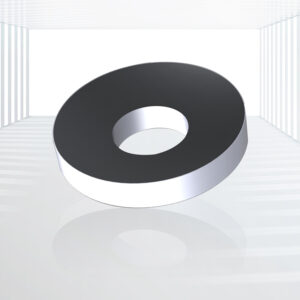
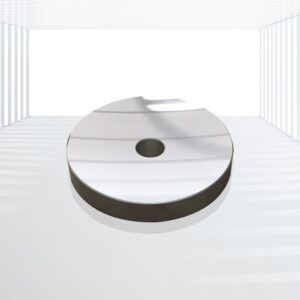
Reflective Performance: The concave shapes and polishing procedure provide excellent reflective performance across the MWIR and LWIR wavelength ranges.
Monolithic Construction: Being constructed from monolithic aluminum blocks ensures robustness and durability in demanding environments.
Thermal Conductivity: High thermal conductivity of aluminum helps in dissipating heat efficiently, maintaining the stability of the mirror during operation.
Lightweight: Aluminum mirrors are lightweight compared to other materials, making them ideal for systems where weight is a concern.
Cost-Effective: The absence of additional reflective coatings reduces manufacturing costs, making these mirrors a cost-effective solution.
Applications: Thermal imaging systems, continuous zoom lenses, double FOV lenses, etc.
-
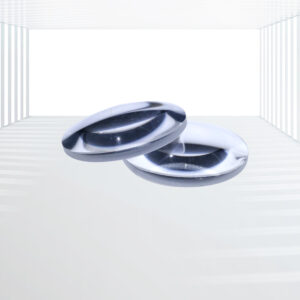
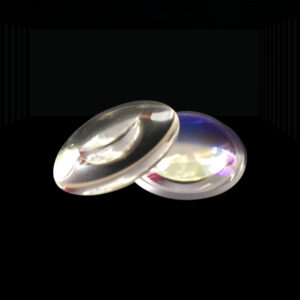
Broad Transmission Range: BaF2 lenses exhibit high transmission rates above 90% across a wide spectral range (0.25µm to 9.5µm), making them versatile for various optical applications.
Radiation Resistance: More resistant to high-energy radiation compared to Calcium Fluoride (CaF2), making BaF2 lenses suitable for environments with intense radiation.
High Transmission Rates: Excellent transmission properties in the UV, visible, and IR regions ensure minimal signal loss and high-quality imaging.
Thermal Imaging Applications: Often used in thermal cameras integrated with cryogenic coolers for MWIR (3-5µm) thermal imaging applications.
Applications: Thermal imaging, spectroscopy, astronomy, defense, laser systems.
-
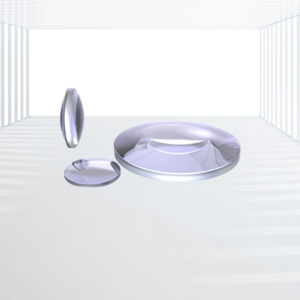
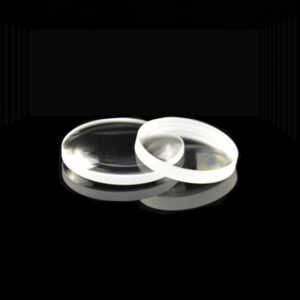
Broad Transmission Range: CaF2 lenses provide excellent transmission from deep UV (0.25μm) to MWIR (7μm), making them versatile for various optical applications.
Low Chromatic Dispersion: Their low chromatic dispersion ensures minimal distortion and high-quality imaging, essential for spectroscopic and imaging systems.
High Damage Threshold: CaF2 lenses can withstand high-intensity laser beams, making them ideal for excimer lasers and other high-power applications.
Low Absorption: Low absorption rates contribute to high efficiency and reduced thermal effects in laser systems.
Group Velocity Dispersion: The lowest GVD among IR materials makes CaF2 lenses suitable for femtosecond IR lasers, ensuring minimal pulse broadening.
Chemical Inertness and Mechanical Strength: CaF2 lenses are chemically inert and possess excellent mechanical strength, ensuring durability and longevity in harsh environments.
Applications: Spectroscopy, MWIR thermal imaging, excimer lasers, femtosecond IR lasers.
-
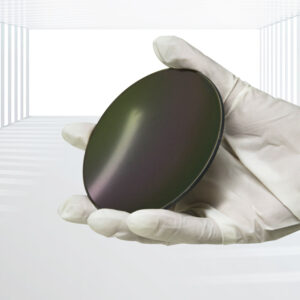
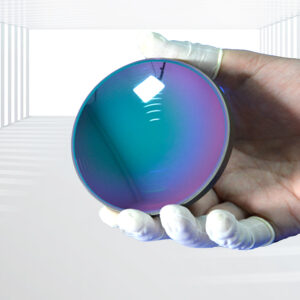
Broad IR Transmission Range: Chalcogenide glass lenses transmit effectively across a wide spectral range from 3 µm to 12 µm, covering both MWIR and LWIR regions.
Superior Thermal Properties: The low temperature coefficients of the refractive index make these lenses ideal for athermalized optical systems, which maintain focus despite temperature variations.
Cost-Effective: The production cost of Chalcogenide glass is significantly lower than that of many IR crystal materials, such as Germanium, making it an economical alternative.
High-Precision Molding: Chalcogenide glass can be molded with high precision, allowing for the efficient production of complex shapes, including aspheric lenses.
Versatility in Applications: These lenses are suitable for a wide range of applications, including thermal imaging, IR spectroscopy, and military optics.
Applications: Infrared optics, thermal imaging, IR spectroscopy, athermalized lens assemblies.
-
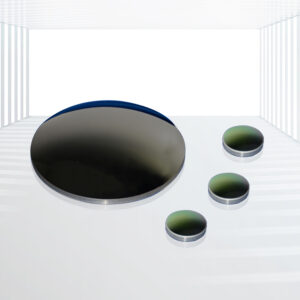
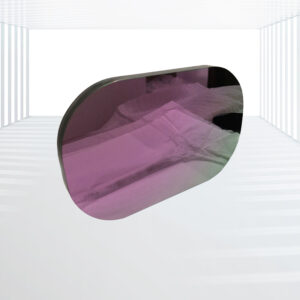
Thermal Imaging: Used in thermal cameras and imaging systems for security, surveillance, and industrial inspections.
IR Spectroscopy: Essential for spectroscopic instruments used in chemical analysis and material characterization.
CO₂ Laser Optics: Commonly used in high-power CO₂ laser systems due to their excellent transmission at 10.6 µm.
Night Vision Systems: Integrated into night vision devices to enhance infrared sensitivity and image clarity.
Defense and Security Optics: Applied in various military and security equipment for infrared detection and imaging.
Applications: Thermal imaging, IR spectroscopy, CO₂ laser optics, night vision systems, defense and security optics.
-
-300x300.jpg)
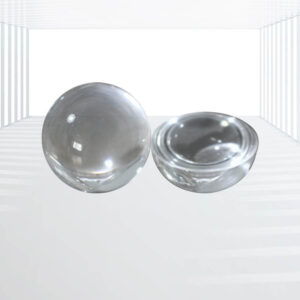
High Transmittance: Sapphire’s inherent optical properties ensure minimal absorption and scattering, resulting in high transmittance across a wide spectral range.
Durability: With a Mohs hardness of 9, sapphire lenses are highly resistant to scratches, abrasion, and chemical attack, making them suitable for harsh environments.
Precision Optics: The lenses are manufactured to precise specifications, ensuring optimal performance in demanding optical systems.
Customizability: Available in various diameters, coatings, and surface qualities, these lenses can be tailored to specific application requirements.
Applications: Medical Devices, Telecommunications, Scientific Research, Aerospace, Industrial Inspection, etc.
-
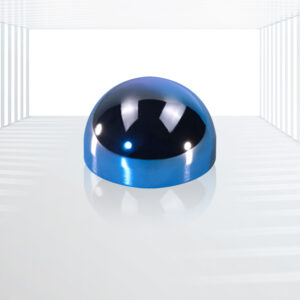
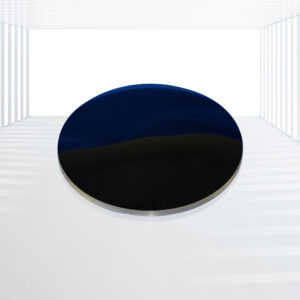
Broad IR Transmission: Silicon lenses are effective in both MWIR and LWIR ranges, making them versatile for various IR applications.
Low Density: Silicon has a low density (2.33 g/cm³), approximately half that of Germanium (Ge) or Zinc Selenide (ZnSe), making it ideal for weight-sensitive applications.
Hardness and Durability: Silicon is harder and less brittle than Germanium, offering better durability and resistance to mechanical stresses.
Chemical Resistance: Silicon exhibits high chemical resistance, ensuring longevity and stability in harsh environments.
Cost-Effective: Silicon is relatively inexpensive compared to other IR materials, providing a cost-effective solution for IR optics.
Applications: IR optics, thermal imaging, laser systems, military optics, medical equipment.
-
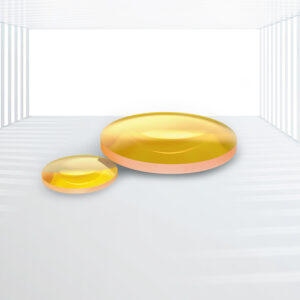
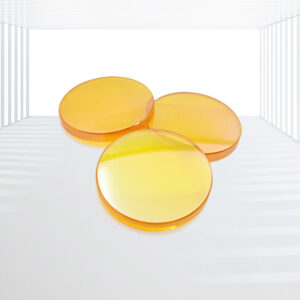
Broad Transmission Range: ZnSe lenses transmit efficiently across a wide spectral range from 0.6 µm to 16 µm, covering both visible and infrared wavelengths.
Low Absorption and Minimal Chromatic Dispersion: ZnSe lenses exhibit low absorption and minimal chromatic dispersion, which ensures high signal integrity and minimal distortion.
High Thermal Shock Resistance: ZnSe lenses can withstand significant temperature variations, making them suitable for high-power laser applications and thermal imaging.
Large Refractive Index: With a refractive index of 2.4 at 10.6 µm, ZnSe lenses are highly effective in focusing and manipulating IR radiation.
Customizability: Kingwin Optics offers custom ZnSe lenses with various coating options, including AR coatings at 3-5µm and 8-12µm, BBAR coating across 3-12µm, and specialized coatings for CO₂ lasers.
Applications: CO₂ lasers, thermal imaging, IR spectroscopy, military optics, medical equipment.
-
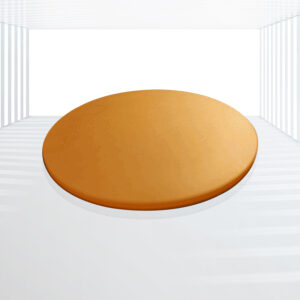
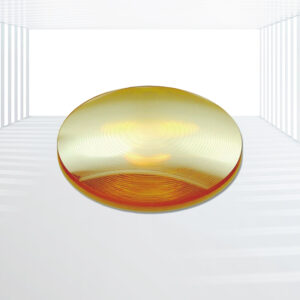
High Fracture Strength: Both types of ZnS lenses exhibit high fracture strength, making them suitable for use in demanding environments.
Mechanical Robustness: ZnS lenses are mechanically robust, providing durability and longevity in various applications.
Broad Transmission Range: Multispectral ZnS (Cleartran) lenses offer a broad transmission range from the visible (VIS) to the infrared (IR) region (0.4 to 14 µm).
Chemical Inertness: Multispectral ZnS lenses are chemically inert, ensuring stability and resistance to harsh chemical environments.
Low Scattering: Multispectral ZnS lenses exhibit low scattering, enhancing the quality and clarity of transmitted signals.
Applications: LWIR optics, Multispectral optics, military systems, etc.











-300x300.jpg)




